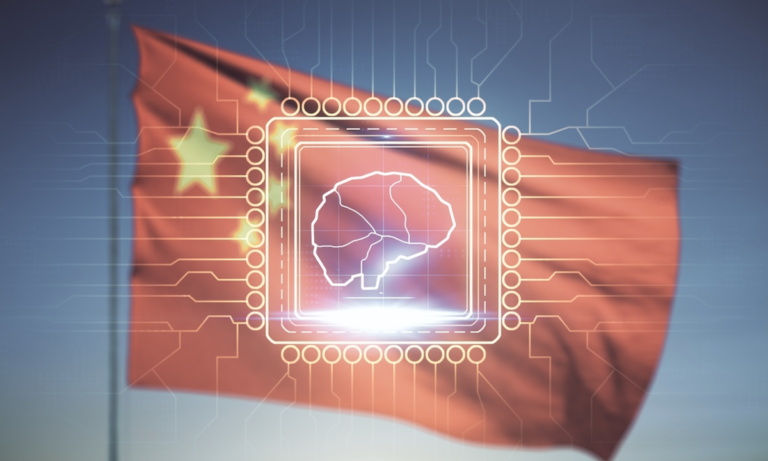China has become the dominant force in generative artificial intelligence (AI) patents, far outpacing its global competitors, according to a new report from the World Intellectual Property Organization (WIPO). The study found that Chinese inventors filed more than 38,000 GenAI patents between 2014 and 2023, more than six times the number filed by their closest rivals in the United States.
WIPO’s Patent Landscape Report, which analyzes global trends in GenAI patent filings, paints a picture of rapid technological advances and intense competition in a field that has captured global attention. GenAI, the technology behind popular apps like ChatGPT, Google Gemini, and Baidu’s Ernie, enables the creation of various types of content, including text, images, music, and software code.
Since the introduction of the deep neural network architecture synonymous with GenAI in 2017, patent filings in this sector have exploded by more than 800%. This sharp increase reflects recent technological advances and the vast potential of GenAI applications across industries.
What is an AI patent?
AI patents encompass various innovations related to artificial intelligence technologies, including generative AI. These patents typically cover new algorithms, machine learning models, data processing techniques, and specific applications of AI in various industries.
The complexity of AI patents lies in the abstract nature of many AI concepts. Unlike traditional patents that can cover physical inventions, AI patents often cover intangible processes and mathematical models. As such, they can be difficult to define and protect under existing patent laws, which were originally designed for more concrete inventions. As a result, AI patents often focus on specific implementations or applications of AI technologies rather than general concepts.
The report’s findings underscore China’s strategic focus on artificial intelligence, a key area of technological development. Chinese companies and institutions dominate the list of top patent filers, with Tencent Holdings leading with 2,074 inventions, Ping An Insurance (1,564) and Baidu (1,234). The Chinese Academy of Sciences ranks fourth with 607 inventions, while IBM is the highest-ranked non-Chinese entity, ranking fifth with 601 inventions.
Other notable companies in the top 10 include Alibaba Group, Samsung Electronics, Google parent company Alphabet, ByteDance and Microsoft, highlighting the global nature of GenAI development despite China’s digital dominance.
The geographic distribution of GenAI patents further underscores China’s lead in this field. With 38,210 inventions, China is far ahead of the United States (6,276 inventions), the Republic of Korea (4,155), Japan (3,409), and India (1,350). This stark contrast reflects China’s significant investment and interest in developing GenAI technologies as part of its broader technology leadership effort.
In terms of specific patent applications, the report reveals that image and video data dominate GenAI patents with 17,996 inventions, followed closely by text (13,494) and speech or music (13,480). GenAI patents using data based on molecules, genes, and proteins have been on the rise, with 1,494 inventions filed since 2014 and an impressive average annual growth of 78% over the last five years. This trend suggests a growing application of GenAI in biotechnology and pharmaceuticals.
The report also highlights that GenAI patents currently account for 6% of all AI patents worldwide, indicating significant room for growth and development in this sector. As GenAI continues to evolve and find new applications across various industries, patent filings are expected to continue to increase, potentially reshaping the global technology landscape.
How big is China’s lead?
While China is clearly the big winner in terms of AI patents, it is important to be careful not to draw overly simplistic conclusions based on patent counts alone. Patents vary widely in quality and impact, and a single breakthrough patent could potentially have more real-world impact than many incremental improvements. In addition, different countries have different patent systems and patent granting standards, which affects the comparability of patent counts across nations.
The strategic use of patents also complicates the situation. Firms and countries may engage in defensive patenting or use patents as a signaling mechanism of technological prowess rather than as a direct indicator of innovative capacity. Moreover, the implementation and commercialization of patented technologies are crucial for their valuation, a factor that is not only reflected in the number of patents.
WIPO Director General Daren Tang highlighted the transformative potential of GenAI, noting its potential to reshape the way we work, live and play. He stressed the importance of analyzing trends and patent data to provide insights into where this rapidly evolving technology is being developed and its future trajectory. Such insights, Mr. Tang suggested, can be crucial for policymakers as they seek to shape the development of GenAI for the common benefit of society while ensuring that humans remain at the center of innovation and creative ecosystems.
As the field of general AI continues to rapidly evolve, it will be crucial to monitor not only the number of patents, but also the emergence of breakthrough technologies, successful commercial applications, and the broader economic and societal impacts of these innovations. The patent landscape provides valuable insights, but it is just one piece of a much larger puzzle for understanding the global state of AI innovation.


